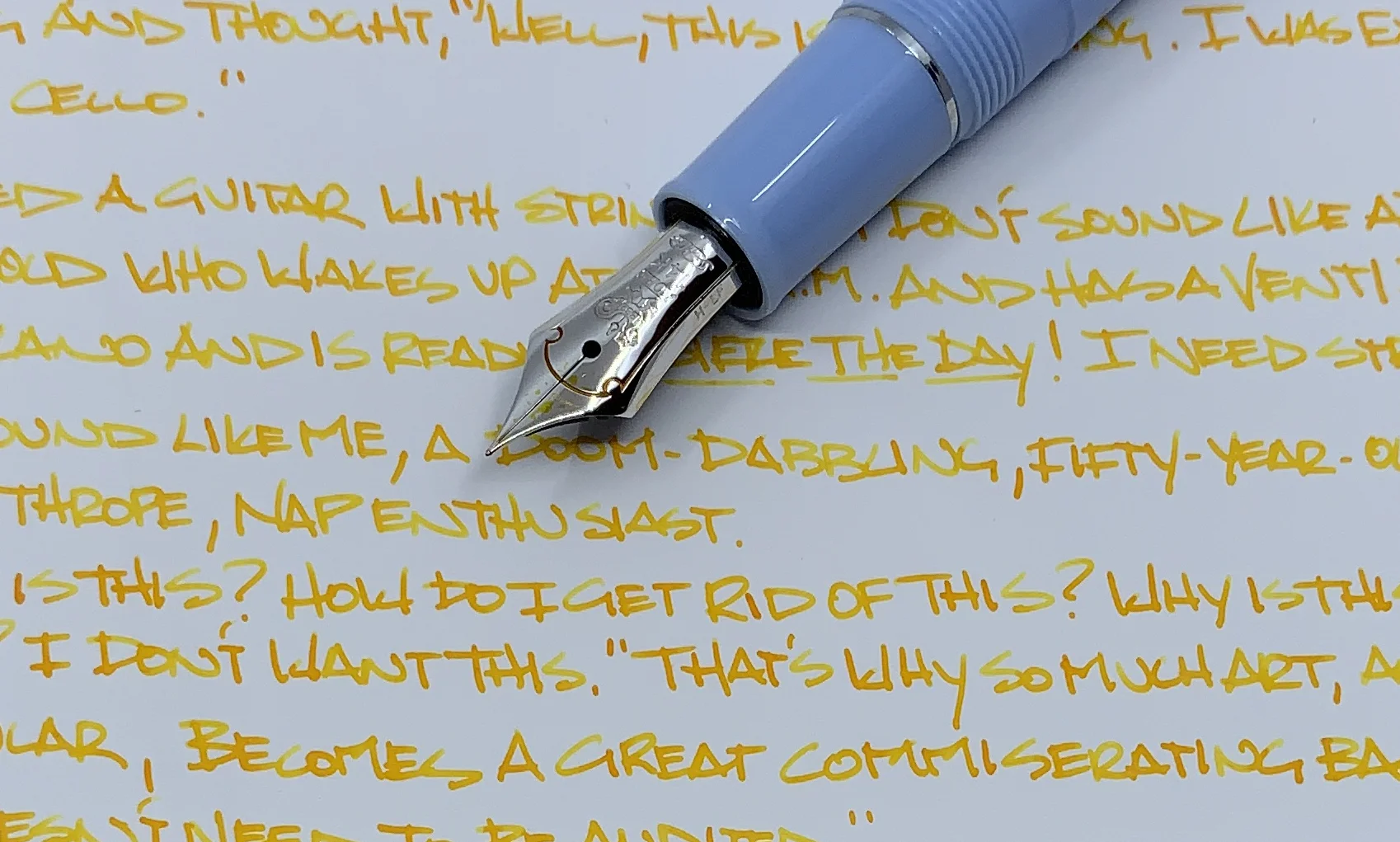For all the grief I have given Pilot over the past year for their handling of their 100th Anniversary celebration, you knew I was going to participate in it when and where I could. I was hoping it would be a pen, and I was hoping it would be in 2018 - the actual 100th year of the company - but alas, neither were meant to be.
I finally got to join in on the fun last month, as Pilot’s 100th Anniversary Iroshizuku inks hit the US market. Better late than never I guess!
This ink set consists of 7 colors, designed in conjunction with their 7 Gods of Good Fortune maki-e fountain pen set made for their anniversary. On the whole, I was disappointed with the color choices. I would have liked to see Pilot push the boundaries a little more if I’m being honest. That said, there are a couple of interesting colors in this group, none more so than Daikokuten in my eyes.
I don’t own a yellow-leaning ink. I have tried a few light oranges in my time, but have never been compelled to go even lighter with yellow. How would this ink look on the page? Would I be able to read it? Can I use it with my favorite extra fine nibs and be happy with it?
As you can tell, Daikokuten requires you to answer a few questions about your ink usage before committing to using it. A simple, basic ink this is not.
I’ve shied away from yellow inks in the past because of their inherent lightness. My eyes are bad as it is - why do I want to strain them even more? The pictures and samples of Daikokuten compelled me because it appeared to have some depth and character to it. And, it wasn't as boring as the rest of the 100th Anniversary Iroshizuku lineup. It seemed fun.
So far, it is. I’d say it’s even better than I thought, although it will never be a daily driver for me. This is a special occasion ink, meaning a 50ml bottle is probably not the way to go unless you have a great use case for it.
Daikokuten performs as well as any other Iroshizuku ink I have tested, which is to say very well. I chose to use it in a 14k gold Sailor EF nib purposefully. If the edge case ink works well in an edge case nib, then I will be happy - even if this isn’t the recommended setup. Light ink plus wide nib is usually the best combination.
I thought white paper would be the best choice for Daikokuten too, but the cream-colored page of the Yoseka Notebook was the winner. It beat out my other standard choices of Rhodia, Tomoe River, and Apica by a decent margin. With Yoseka paper, I could see the character in the ink that made me want to purchase it in the first place. As I alluded to earlier, your paper choice will effect an ink color this light.
The big question is: Would I recommend this ink to you? Definitely maybe. It’s a fun ink, but not an ink I will use all of the time. That makes it the perfect candidate for an ink sample purchase, or 15ml mini bottle if you can find someone willing to break up the set.
For me, I’m happy to at least have one cool product from Pilot’s 100th Anniversary event.
(I purchased this ink at a discount from Vanness Pens.)
Enjoy reading The Pen Addict? Then consider becoming a member to receive additional weekly content, giveaways, and discounts in The Pen Addict shop. Plus, you support me and the site directly, for which I am very grateful.
Membership starts at just $5/month, with a discounted annual option available. To find out more about membership click here and join us!










